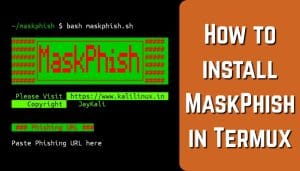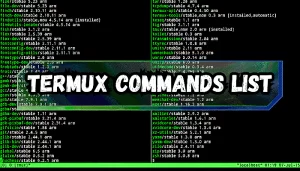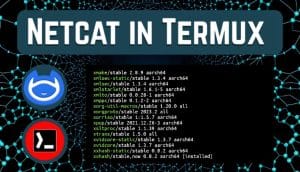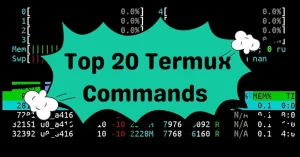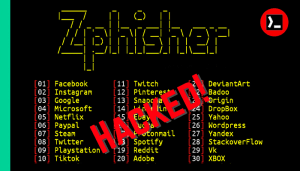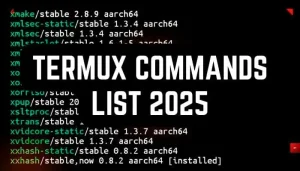If you are interested in cyber security and ethical hacking, then you will definitely hear about Kali Linux. Kali Linux is a computer operating system that is designed for penetration testing and learning ethical hacking.
This article provides basic Kali Linux commands along with a Kali Linux commands list PDF file.
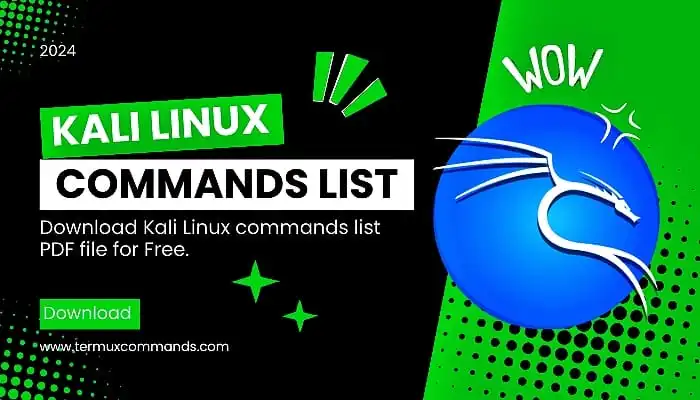
Table of Contents
What is Kali Linux?
Before you learn the basic Kali Linux commands, you need to understand what Kali Linux is.
Kali Linux is a popular and powerful computer operating system specially designed for security testers, cybersecurity experts, and ethical hackers. It has a lot of tools for finding system loopholes, scanning networks for vulnerabilities, and a lot more tools available for keeping network and systems safe.
Basic Kali Linux commands list
Below is a frequently used and basic Kali Linux commands list that helps you learn and use Kali Linux easily.
1. Package Management Commands:
Package Manager in Kali Linux is a tool to update, upgrade, install, uninstall, and manage packages. Here is the basic package management Kali Linux commands list:
- apt-get update : Updates the installed packages.
- apt-get upgrade : Upgrades all installed packages to their latest versions.
- apt-get install <package> : To install a package.
- apt-get remove <package> : Use to Remove a package.
- apt-get purge <package> : To Remove a package along with its configuration files.
- dpkg -i <package.deb> : Installs a local .deb file.
- dpkg -l : To see the list of all installed packages.
- dpkg -L <package> : To see the list files installed by a package.
2. Directory Management Commands:
In the Linux language, folders are called directories. Below directory management Kali Linux commands list will help you easily manage directories:
- cd <directory_name> : Changes the current directory to the specified directory.
- cd ~ : Goes to the user’s home directory.
- cd – : Goes to the previous directory.
- ls : To view all the contents of the current directory.
- ls -a : To view all files including hidden files.
- du -sh <directory_name> : View disk usage of a directory.
- mkdir <directory_name> : To create a new directory.
- rm -r <directory_name> : To delete a directory.
3. File Management Commands:
With the help of file management commands, you can easily create, copy, move, rename, and delete files in the Linux operating system. Here are some basic Kali Linux commands for managing files:
- touch <file_name> : Creates a new file.
- cp <source> <destination> : To copy a file.
- mv <source> <destination> : To Move a file.
- rm <file_name> : To remove/delete a file.
- cat <file_name> : To view the contents of a file.
- mv <file_name> <new_file_name> : Rename a file.
- unzip <file_name.zip> : Unzip a zip file.
- tar -xzvf <file_name.tar> : To extract a tar file.
4. File Running Commands:
Kali Linux allows you to execute or run different types of files using specific commands based on the file type. Here are some of the basic file-running Kali Linux commands:
- sh <script.sh> : To run a shell script.
- python <file_name.py> : To run a python file.
- perl <script.pl> : Runs a Perl script.
- ruby <script.rb> : Runs a Ruby script.
- node <file_name.js> : To execute a JavaScript file.
- php <file_name.php> : To execute a PHP file.
5. Text and File Editing Commands:
Kali Linux has many commands and tools to edit text and files. Here are some of its basic and commonly used text and file editing tools with commands:

Nano
Nano is a simple and easy-to-use text editor available in Kali Linux.
nano <file_name> : To open a file for editing in the nano text editor.
Nano basic commands:
| Press {Ctrl + O} : Save the file. |
| Press {Ctrl + U} : Paste text. |
| Press {Ctrl + K} : Cut text. |
| Press {Alt + U} : Undo changed. |
| Press {Ctrl + X} : Exit the Nano editor. |

Vim
Vim is a powerful and advanced text editor that you can use for high-level editing.
vim <file_name> : To open a file for editing in the vim text editor.
Vim basic commands:
| Press {a} : Insert text. |
| Press {Esc} : Exit text Insert mode. |
| Press {:w} : Save the file. |
| Press {P} : Paste text. |
| Press {dd} : Delete the entire line. |
| Press {:q} : Exit the Vim editor. |

Gedit
Gedit is a graphical text editor that comes with Kali Linux. If you want to use a GUI-based text editor, then you can use Gedit.
gedit <file_name> : To open a file for editing in the gedit text editor.
Gedit basic commands:
| Press {Ctrl + S} : Save file. |
| Press {Ctrl + C} : Copy text. |
| Press {Ctrl + V} : Paste text. |
| Press {Ctrl + Z} : Undo changes. |
| Press {Ctrl + Q} : Exit the Gedit editor. |
6. Networking Commands:
Kali Linux networking commands and tools allow you to do many networking related tasks. Here are some of its common networking commands and tools:
- ifconfig : Displays your all active network informations.
- ip addr : To view IP address information.
- nmap <Ip_address> : To scan a network with Nmap.
- wireshark : This command will open the Wireshark GUI version.
- airmon-ng : To open airmon-ng tool.
- wget {URL} : To download a file from a specific URL.
7. Security and Penetration Testing Commands:
Kali Linux is specially designed for security and penetration testing. Some of its popular and basic security and penetration testing commands are listed below:
- nmap -A <hostname/IP> : Detect the running version and OS of a network.
- whois <domain> : Get details about a domain name.
- nikto -h <hostname/IP> : Use to scan a web server for vulnerabilities.
- sqlmap -u <URL> : Check for the SQL injection vulnerability of a URL.
- msfconsole : Launch the Metasploit framework.
8. System Management Commands:
In Kali Linux, you can manage, maintain, and operate your system easily just by running some commands. Here are some basic Kali system management commands:
- ps : Displays all running processes.
- top : To see system CPU, memory, and other usage.
- kill <process_id> : kill a process with its process ID.
- uname -a : To see all the information about your system.
- df -h : View disk space usage.
- free -h : View memory usage.
9. Useful shortcuts and commands:
Here are some useful shortcuts and commands that are commonly used in Kali Linux:
- Press {!!} : Repeats the previous command.
- Press {Ctrl + Y} : Pastes the copied text.
- Press {Ctrl + U} : Undo the last change.
- Press {Ctrl + L} : To clear the terminal screen.
- Press {Ctrl + D} : Exit from terminal.
These are some of the basic Kali Linux commands. As a beginner, these Kali Linux commands will help you a lot in understanding and using Kali Linux efficiently. By learning these commands, you can use Kali Linux like a professional.
Basic Kali Linux commands list pdf download link:
Kali Linux Commands List PFD is an easily accessible resource for beginners where all the basic Kali Linux commands are available to use at any time.
Click on the download button to download the basic Kali Linux commands list PDF file:
In this PDF file, you can find all the basic Kali Linux commands list for package management, networking, security, penetration testing, and more.
Conclusion:
In this article, I have provided a basic Kali Linux commands list for beginners so they can understand and use Kali Linux easily.
I have also provided a Kali Linux commands list PDF file download link where all the basic Kali Linux commands are available to use at any time.


